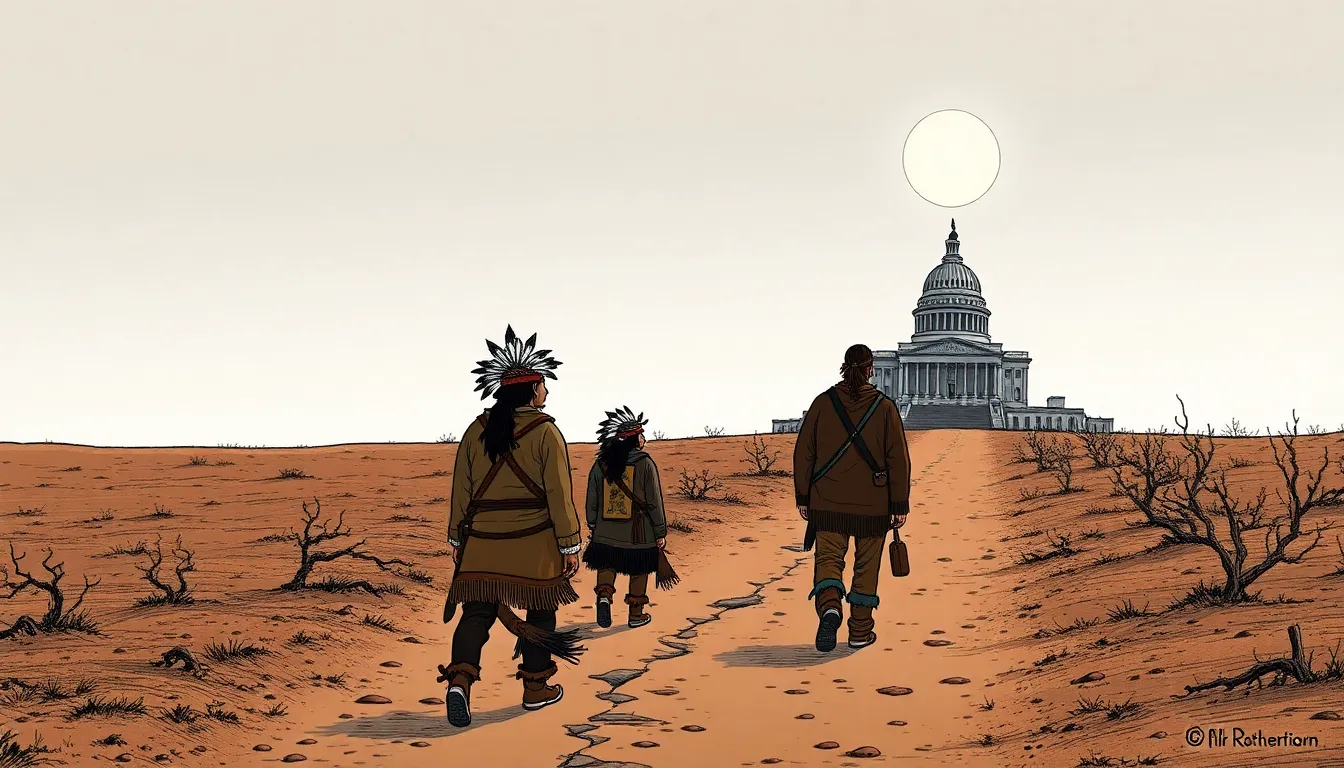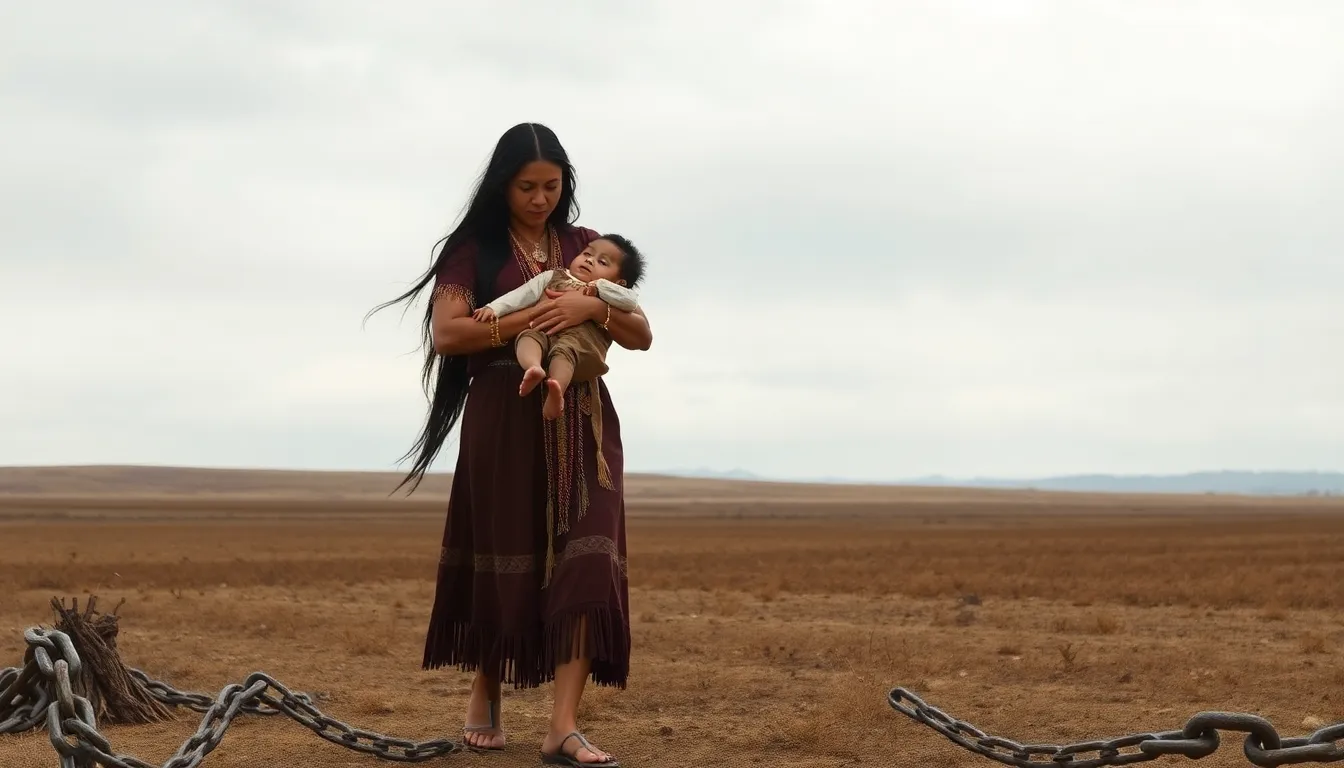Table of Contents
ToggleIn the world of political commentary, few images capture the gravity of historical events like the “Trail of Tears” political cartoon. This powerful artwork doesn’t just depict a tragic chapter in American history; it serves as a mirror reflecting society’s conscience—or lack thereof. With a dash of humor and a sprinkle of irony, these cartoons bring to life the struggles faced by Native Americans during their forced relocation.
Historical Context of the Trail of Tears
The Trail of Tears emerged from a series of government actions that devastated Native American communities. This period in American history illustrates the struggles faced during forced relocations.
Overview of the Indian Removal Act
The Indian Removal Act of 1830 authorized the federal government to relocate Native American tribes from their ancestral lands in the southeastern United States. President Andrew Jackson championed this act, claiming it promoted progress and economic development. The act specifically affected tribes such as the Cherokee, Creek, and Seminole. Thousands of Native Americans were uprooted from fertile lands, often without compensation. The act paved the way for mass displacement, leading to significant suffering and loss among Indigenous populations.
Impact on Native American Communities
The forced relocations had profound impacts on Native American communities. Families faced starvation, disease, and harsh conditions during the marches. Many endured extreme weather, leading to thousands of deaths along the routes. Loss of land resulted in the disruption of traditional lifestyles and cultures. Displacement fractured tribal societies, diminishing their autonomy and social structures. The emotional and psychological ramifications persist in Indigenous communities today.
Analyzing Political Cartoons

Political cartoons serve as powerful tools for commentary and critique. They encapsulate complex issues through imagery and satire, making them accessible and engaging.
Definition and Purpose of Political Cartoons
Political cartoons are visual representations that express opinions on political events or social issues. They often employ humor, caricature, and exaggeration to highlight contradictions or injustices. Their purpose lies in provoking thought and encouraging dialogue, often challenging viewers to reflect on societal values. By simplifying intricate topics, political cartoons can amplify awareness around significant events, such as the Trail of Tears, shedding light on the experiences of those affected.
Common Themes in Political Cartoons
Recurring themes in political cartoons include power dynamics, social justice, and human rights. Artists frequently depict government authority, illustrating its impact on marginalized groups. Irony and satire often highlight the disparity between political rhetoric and reality. The Trail of Tears cartoon exemplifies this, portraying the suffering of Native Americans against a backdrop of indifference from policymakers. In addition, humor may serve to engage audiences, making serious subjects more digestible while prompting critical thinking.
The Trail of Tears Political Cartoon
The “Trail of Tears” political cartoon becomes a powerful reminder of a dark era in American history. It captures the suffering faced by Native Americans during their forced relocation.
Description of a Notable Cartoon
One notable cartoon features a grieving Cherokee mother carrying her child, surrounded by the stark desolation of their former land. Artisans often depict the mother’s sorrow in contrast with indifferent government officials, highlighting the emotional weight of her journey. The cartoon emphasizes abandonment and loss, illustrating the profound impact of the Indian Removal Act of 1830. Artists utilize stark imagery to draw attention to the injustice of the situation, making the viewer confront the reality of the suffering endured by Indigenous families. Each detail stands out, conveying a sense of urgency and despair.
Interpretation of Symbols and Imagery
Several symbols within the cartoon enhance its message. The broken chains often signify liberation, yet here they represent the lost freedoms of Native Americans. Empty landscapes convey a sense of emptiness due to the eviction, capturing the erasure of entire cultures. Furthermore, exaggerated features of the policymakers serve to satirize their detachment from the consequences of their actions. Such imagery prompts reflection on the balance of power, with the suffering of the Cherokee people starkly juxtaposed against the aloofness of authority. This interpretation encourages viewers to question the moral implications surrounding the events depicted.
The American Response
Public perception of the cartoons varied widely. Many viewed them as poignant and powerful reflections of the injustices faced by Native Americans. The imagery elicited sympathy for those displaced and drew attention to the emotional toll of the forced relocations. Others, particularly those who supported the Indian Removal Act, dismissed the cartoons as exaggerated or biased representations. Critics argued these cartoons unfairly portrayed the government as cruel, which sparked debates over the treatment of Indigenous populations.
Impact on political discourse became evident as these cartoons circulated. They raised awareness and provoked discussions about morality and ethics in government policy. Politicians and citizens alike felt compelled to confront the implications of the relocations. Satirical elements in the cartoons challenged authority and questioned the legitimacy of those in power. Discussions surrounding these issues encouraged more individuals to stand up against injustices, fostering an environment for advocacy and reform. The Trail of Tears cartoons, thus, played a critical role in shaping public opinion and influencing political dialogue during that period.
The “Trail of Tears” political cartoon stands as a poignant reminder of the suffering endured by Native Americans during one of the darkest chapters in American history. By utilizing humor and irony, it effectively conveys the emotional weight of forced relocation while critiquing the indifference of those in power. This artistic representation not only sheds light on historical injustices but also encourages ongoing discussions about morality and ethics in government policies. As audiences reflect on the profound impacts of such events, the cartoon remains a vital tool for understanding the complexities of power dynamics and social justice. Ultimately, it serves as a call to acknowledge and address the lasting effects of these injustices on Indigenous communities today.








